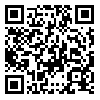1. Sheet RF. Nurse prescribing in the UK. 2012. Available from: http://www.rcn.org.uk/__data/assets/pdf_file/0004/462370/15.12_
2. Delamaire M, Lafortune G. Nurses in Advanced Roles: A Description and Evaluation of Experiences in 12 Developed Countries. OECD Health Working Papers 2010; 54(5): 1-107. [
DOI:10.1787/5kmbrcfms5g7-en]
3. Cooper RJ, Anderson C, Avery T, Bissell P, Guillaume L, Hutchinson A, et al. Nurse and pharmacist supplementary prescribing in the UK—a thematic review of the literature. Health Policy. 2008;85(3):277-92. [
DOI:10.1016/j.healthpol.2007.07.016] [
PMID]
4. Hobson RJ. Investigation into early implementation of non medical prescribing in the UK:. PhD Thesis, University of Bath. Department of Pharmacy and Pharmacology, 2008.
5. Stenner K, Courtenay M. The role of inter‐professional relationships and support for nurse prescribing in acute and chronic pain. J Adv Nurs. 2008;63(3):276-83. [
DOI:10.1111/j.1365-2648.2008.04707.x] [
PMID]
6. Jones K. Developing a prescribing role for acute care nurses: Kathryn Jones says that giving nurses responsibility for prescribing offers patients faster access to medicines while making better use of staff skills. Nurs Manage. 2009;16(7):24-8. [
DOI:10.7748/nm2009.11.16.7.24.c7351] [
PMID]
7. Hudson SA, McAnaw JJ, Johnson BJ. The changing roles of pharmacists in society. Bowskill D. The integration of nurse prescribing: case studies in primary and secondary care: University of Nottingham; 2009. Available from: http://etheses.nottingham.ac.uk/1036
8. Bradley E, Nolan P. Impact of nurse prescribing: a qualitative study. J Adv Nurs. 2007;59(2):120-8. [
DOI:10.1111/j.1365-2648.2007.04295.x] [
PMID]
9. Darvishpour A, Joolaee S, Cheraghi MA. [A meta-synthesis study of literature review and systematic review published in nurse prescribing]. Med J Islam Repub Iran. 2014;28:77. [
PMID] [
PMCID]
10. Elo S, Kyngäs H. The qualitative content analysis process. J Adv Nurs. 2008;62(1):107-15. [
DOI:10.1111/j.1365-2648.2007.04569.x] [
PMID]
11. Holloway I, Wheeler S. Qualitative Research in Nursing and Healthcare. 3rd ed. Oxford: Blackwell science; 2010. Carpenter DR. Qualitative research in nursing: Advancing the humanistic imperative: Lippincott Williams & Wilkins; 2011.
12. Graneheim UH, Lundman B. Qualitative content analysis in nursing research: concepts, procedures and measures to achieve trustworthiness. Nurse Educ Today. 2004;24(2):105-12. [
DOI:10.1016/j.nedt.2003.10.001] [
PMID]
13. Polit-O'Hara D, Beck CT. Essentials of nursing research: Methods, appraisal, and utilization: Lippincott Williams & Wilkins; 2006. Barrowman L. Review of the implementation of the nurse prescribing role. On behalf for the Trust Nurses Association in Northern Ireland. Northern Ireland Practice and Education Council for Nursing and midwifery (NIPEC) Belfast; 2007.
14. Miles K, Seitio O, McGilvray M. Nurse prescribing in low‐resource settings: professional considerations. Int Nurs Rev. 2006;53(4):290-6. [
DOI:10.1111/j.1466-7657.2006.00491.x] [
PMID]
15. Blanchflower J, Greene L, Thorp C. Breaking through the barriers to nurse prescribing. Nurs Times. 2013;109(31-32):12-3.
16. Ruth Lv, Francke A, Mistiaen P. Effects of nurse prescribing of medication: a systematic review. 2008.; 5(2).
17. Bhanbhro S, Drennan VM, Grant R, Harris R. Assessing the contribution of prescribing in primary care by nurses and professionals allied to medicine: a systematic review of literature. BMC Health Serv Res. 2011;11(1):330: 3-10.
18. Stenner K, Carey N, Courtenay M. Implementing nurse prescribing: a case study in diabetes. J Adv Nurs. 2010;66(3):522-31. [
DOI:10.1111/j.1365-2648.2009.05212.x] [
PMID]
19. Creedon R, O'Connell E, McCarthy G, Lehane B. An evaluation of nurse prescribing. Part 1: a literature review. Br J Nurs. 2009;18(21): 1322-27. [
DOI:10.12968/bjon.2009.18.21.45366] [
PMID]
20. Foster J. A history of the early development of the Nurse Practitioner role in New South Wales, Australia (Doctor of Philosophy). 2010.
21. Watterson A, Turner F, Coull AF, Murray I, Boreham N. An evaluation of the expansion of Nurse Prescribing in Scotland. 2009.
22. Courtenay M, Carey N. The prescribing practices of nurse independent prescribers caring for patients with diabetes. Practical Diabetes International. 2008;25(4):152-7. [
DOI:10.1002/pdi.1235]
23. Lockwood EB, Fealy GM. Nurse prescribing as an aspect of future role expansion: the views of Irish clinical nurse specialists. J Nurs Manag. 2008;16(7):813-20. [
DOI:10.1111/j.1365-2934.2008.00853.x] [
PMID]
24. Sketris IS, Lummis H, Langille E. Optimal prescribing and medication use in Canada: challenges and opportunities: Citeseer; 2007.
25. Kroezen M, Francke AL, Groenewegen PP, van Dijk L. Nurse prescribing of medicines in Western European and Anglo-Saxon countries: a survey on forces, conditions and jurisdictional control. Int J Nurs Stud. 2012;49(8):1002-12. [
DOI:10.1016/j.ijnurstu.2012.02.002] [
PMID]
26. Brancato V. Improving nurse-physician collaboration: a health care imperative. The Pennsylvania Nurse. 2005;60(5):23. [
PMID]
27. Courtenay M, Stenner K, Carey N. An exploration of the practices of nurse prescribers who care for people with diabetes: a case study. J Nurs Healthc Chronic Illn. 2009;1(4):311-20. [
DOI:10.1111/j.1752-9824.2009.01034.x]
28. Bissell P, Cooper R, Preston L, Anderson C, Avery A, James V, et al. An evaluation of supplementary prescribing in nursing and pharmacy. Final report for the Department of Health. 2008.
29. MaddoxC. Influences on Non-Medical Prescribing: Nurse and Pharmacist Prescribers in Primary and Community Care. PhD thesis, Faculty of Medical and Human Science, University of Manchester. School of Pharmacy and Pharmaceutical Sciences. 2011.
30. Clancy M. Irish Emergency Nurses' Attitudes towards Role Expansion in, and Barriers to Nurse Prescribing. Masters dissertation, Dublin: Royal College of Surgeons in Ireland. 2011.






